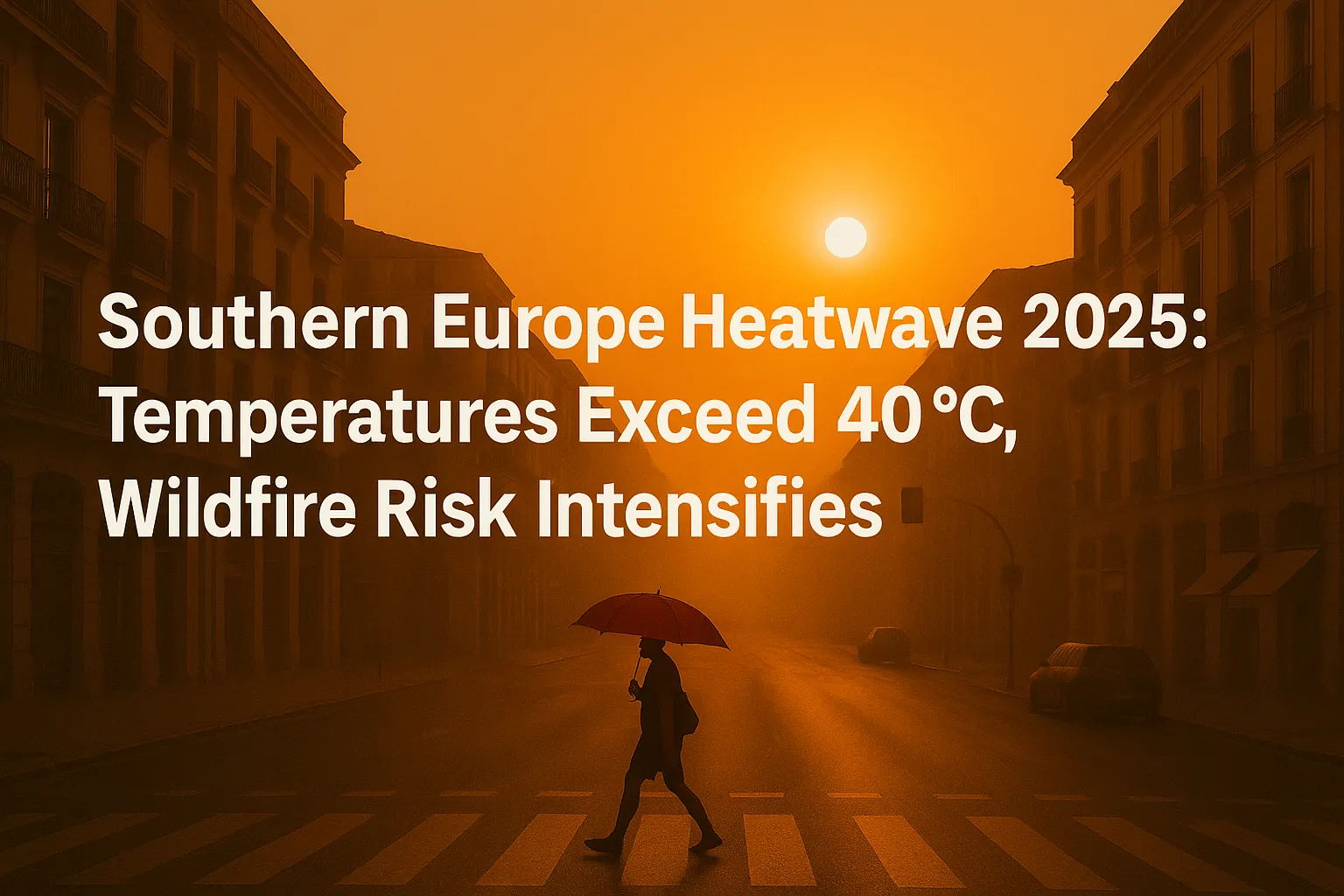Southern Europe swelters under deadly heatwave as temperatures pass 40C
A dangerous heatwave is sweeping across Southern Europe, with temperatures soaring past 40°C in southern France, Spain, Portugal, the Balkans, and parts of western Türkiye. Meteorological agencies have issued red and orange alerts, warning of severe health risks and heightened wildfire danger.
Current Situation Across the Region
A persistent high-pressure system is trapping hot, dry air over the Mediterranean basin, with Saharan dust further intensifying the heat. Overnight temperatures remain unusually high, preventing adequate cooling and increasing cumulative heat stress.
Most Affected Areas
- Southern France & Western Balkans: Above 40°C with multiple red/orange alerts.
- Spain & Portugal: Peaks of 43–44°C; several wildfire outbreaks and evacuations reported.
- Wider Mediterranean: Elevated wildfire risk due to prolonged dryness.
Why It’s Called “Deadly”
Earlier in the summer, a similar heatwave caused an estimated 2,300 additional deaths in just 10 days across 12 major cities. Experts link these fatalities directly to climate change–amplified heat conditions.
Daily Life & Health Tips
- Avoid strenuous outdoor activity between 12:00–17:00; stay in shade or air-conditioned spaces.
- If night temperatures remain high, use wet towels and fans for evaporative cooling.
- Check on elderly, vulnerable, or chronically ill individuals at least twice daily.
- In high wildfire risk zones, avoid activities that could generate sparks or flames.
Experts stress that “high overnight temperatures” are the most dangerous factor, as the body loses its chance to recover from daytime heat.
Urban Preparedness Checklist
| Measure | Why It Matters | Action |
|---|---|---|
| Cooling Centers | Offer safe, cool environments for vulnerable populations. | List and promote public cooling facilities. |
| Night Transport | Essential for accessing emergency care during heat spikes. | Coordinate emergency services and night access points. |
| Work Safety | Outdoor labor becomes dangerous in peak heat hours. | Adjust schedules and mandate rest breaks based on heat index. |
| Fire Prevention | Dry, windy conditions can spread fires rapidly. | Implement strict fire bans and prepare evacuation plans. |
Conclusion: Preparing for the “New Normal”
Temperatures above 40°C in Southern Europe are no longer rare, but part of a recurring summer pattern. Urban heat action plans, early warning systems, and workplace safety rules save lives in this new climate reality. Always follow official forecasts and emergency alerts in your area.

